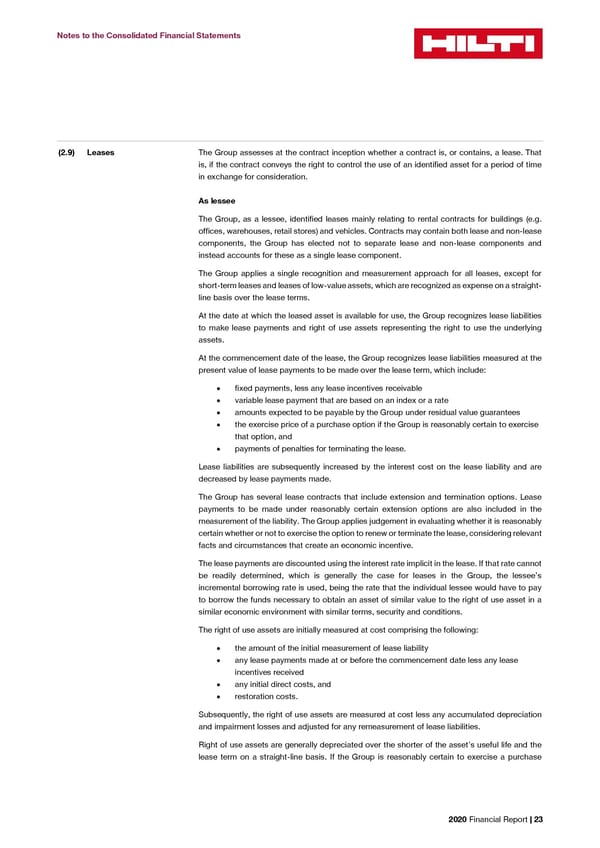Notes to the Consolidated Financial Statements (2.9) Leases The Group assesses at the contract inception whether a contract is, or contains, a lease. That is, if the contract conveys the right to control the use of an identified asset for a period of time in exchange for consideration. As lessee The Group, as a lessee, identified leases mainly relating to rental contracts for buildings (e.g. offices, warehouses, retail stores) and vehicles. Contracts may contain both lease and non-lease components, the Group has elected not to separate lease and non-lease components and instead accounts for these as a single lease component. The Group applies a single recognition and measurement approach for all leases, except for short-term leases and leases of low-value assets, which are recognized as expense on a straight- line basis over the lease terms. At the date at which the leased asset is available for use, the Group recognizes lease liabilities to make lease payments and right of use assets representing the right to use the underlying assets. At the commencement date of the lease, the Group recognizes lease liabilities measured at the present value of lease payments to be made over the lease term, which include: • fixed payments, less any lease incentives receivable • variable lease payment that are based on an index or a rate • amounts expected to be payable by the Group under residual value guarantees • the exercise price of a purchase option if the Group is reasonably certain to exercise that option, and • payments of penalties for terminating the lease. Lease liabilities are subsequently increased by the interest cost on the lease liability and are decreased by lease payments made. The Group has several lease contracts that include extension and termination options. Lease payments to be made under reasonably certain extension options are also included in the measurement of the liability. The Group applies judgement in evaluating whether it is reasonably certain whether or not to exercise the option to renew or terminate the lease, considering relevant facts and circumstances that create an economic incentive. The lease payments are discounted using the interest rate implicit in the lease. If that rate cannot be readily determined, which is generally the case for leases in the Group, the lessee’s incremental borrowing rate is used, being the rate that the individual lessee would have to pay to borrow the funds necessary to obtain an asset of similar value to the right of use asset in a similar economic environment with similar terms, security and conditions. The right of use assets are initially measured at cost comprising the following: • the amount of the initial measurement of lease liability • any lease payments made at or before the commencement date less any lease incentives received • any initial direct costs, and • restoration costs. Subsequently, the right of use assets are measured at cost less any accumulated depreciation and impairment losses and adjusted for any remeasurement of lease liabilities. Right of use assets are generally depreciated over the shorter of the asset's useful life and the lease term on a straight-line basis. If the Group is reasonably certain to exercise a purchase 2020 Financial Report | 23
 2020 Financial Report Page 24 Page 26
2020 Financial Report Page 24 Page 26